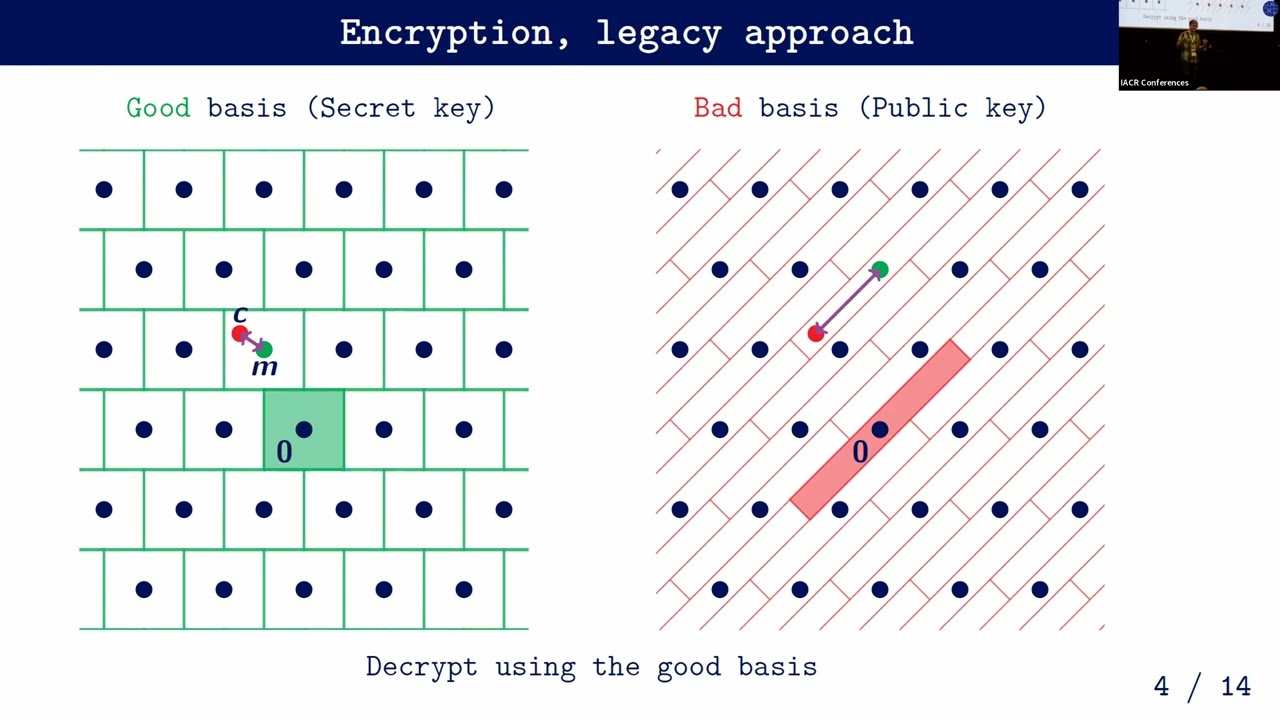Welcome to the resource topic for 2021/1332
Title:
On the Lattice Isomorphism Problem, Quadratic Forms, Remarkable Lattices, and Cryptography
Authors: Léo Ducas, Wessel van Woerden
Abstract:A natural and recurring idea in the knapsack/lattice cryptography literature is to start from a lattice with remarkable decoding capability as your private key, and hide it somehow to make a public key. This is also how the code-based encryption scheme of McEliece (1978) proceeds. This idea has never worked out very well for lattices: ad-hoc approaches have been proposed, but they have been subject to ad-hoc attacks, using tricks beyond lattice reduction algorithms. On the other hand the framework offered by the Short Integer Solution (SIS) and Learning With Errors (LWE) problems, while convenient and well founded, remains frustrating from a coding perspective: the underlying decoding algorithms are rather trivial, with poor decoding performance. In this work, we provide generic realizations of this natural idea (independently of the chosen remarkable lattice) by basing cryptography on the lattice isomorphism problem (LIP). More specifically, we provide: - a worst-case to average-case reduction for search-LIP and distinguish-LIP within an isomorphism class, by extending techniques of Haviv and Regev (SODA 2014). - a zero-knowledge proof of knowledge (ZKPoK) of an isomorphism. This implies an identification scheme based on search-LIP. - a key encapsulation mechanism (KEM) scheme and a hash-then-sign signature scheme, both based on distinguish-LIP. The purpose of this approach is for remarkable lattices to improve the security and performance of lattice-based cryptography. For example, decoding within poly-logarithmic factor from Minkowski’s bound in a remarkable lattice would lead to a KEM resisting lattice attacks down to poly-logarithmic approximation factor, provided that the dual lattice is also close to Minkowski’s bound. Recent works have indeed reached such decoders for certain lattices (Chor-Rivest, Barnes-Sloan), but these do not perfectly fit our need as their duals have poor minimal distance.
ePrint: https://eprint.iacr.org/2021/1332
Talk: https://www.youtube.com/watch?v=aK4wdZCCKNU
Slides: https://iacr.org/submit/files/slides/2022/eurocrypt/eurocrypt2022/354/slides.pdf
See all topics related to this paper.
Feel free to post resources that are related to this paper below.
Example resources include: implementations, explanation materials, talks, slides, links to previous discussions on other websites.
For more information, see the rules for Resource Topics .
